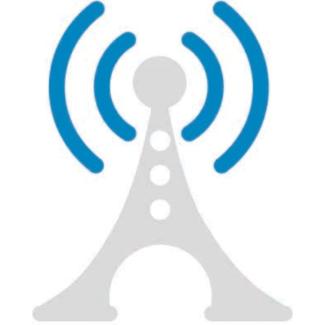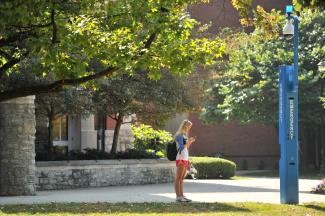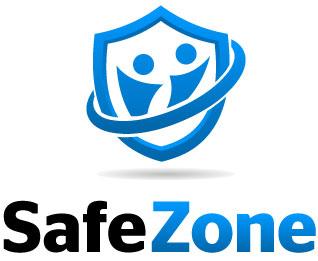Emergencies can strike anyone, anytime and anywhere. The best way to protect yourself, your peers and your family is to expect the unexpected and become familiar with the University of Kentucky Emergency Response Guide. It is designed to provide students, faculty, staff and visitors with immediate actions to take in the event of an emergency.

Emergency Response Guide For Immediate Assistance: Dial 859-257-8573(UKPD)
Emergency Notification Methods
For immediate assistance call 911 or 859-257-UKPD(8573).
UK utilizes a variety of emergency notification systems. Faculty, staff and parents are encouraged to familiarize themselves with all forms of notifications.
What to do in case of an emergency
Evacuation
When directed to evacuate, follow the posted evacuation routes and/or illuminated exit signs in the building.
In the event of an evacuation order, by fire alarm or other notification method:
- Try to remain calm
- Immediately proceed to the nearest exit – leave all belongings behind
- Assist persons with disabilities to the nearest exit if possible
- Move quickly, but in an orderly manner out of the building
- Once outside, follow the direction of first responders
Do not leave the assembly area until directed by first responders, faculty, or staff.
Do not re-enter an evacuated area without permission. Remember, hazards may be present even if alarms are no longer actively sounding. Prematurely re-entering a dangerous area risks not only your safety, but that of emergency responders who may have to rescue you.
Shelter-in-Place
- If a shelter-in-place order is issued, you will be notified through UK Alert, the university’s emergency notification system.
- If you are inside, stay where you are unless the building you are in is affected. If the building is affected, and the fire alarm has been activated, you should evacuate.
- If you are outdoors, proceed into the closest UK building or follow instructions from emergency personnel.
- It is ideal to shelter-in-place in an interior room with few or no windows and doors to the outside if possible. Shut all windows and close exterior doors.
- If a hazardous chemical release occurs outside the building, follow these same procedures.
Fire
Remember RACE when responding to a fire:
- Rescue – Rescue yourself first. Provide assistance to others exiting building if safe to do so. Remain low to the ground to avoid breathing in smoke and particles.
- Alert – Alert others by activating the fire alarm on the way out.
- Close – Close the door when exiting to help prevent the fire from spreading.
- Evacuate – Extinguish the fire only if it is safe to do so and you know how to – otherwise evacuate, close the door, and sound the alarm on the way out.
The UK Evacuation Policy mandates that the building shall immediately be evacuated (except in hospital patient areas where alternate procedures are authorized).
Regardless of the fire's size or the success of your attempt to extinguish it, always call UKPD at 911 or 859-257-UKPD (8573).
Medical Emergency
If a medical emergency occurs, call UKPD at 911 or 859-257-UKPD (8573) and report the emergency. Provide the following information:
- Location of the victim
- Condition of the victim
- Type of emergency
- Any dangerous conditions at the scene
Remember the following steps if you witness or need assistance for a medical emergency:
- Call 911 or 859-257-UKPD (8573)
- Make sure the scene is safe before you attempt to assist the individual
- If you are trained in First Aid or emergency medical response, render only the care that you are trained to provide
- Do not attempt to move the injured person unless they are in immediate danger
- Clear the area of unnecessary people
- If possible, have someone meet and escort first responders to the individual
- After the person’s immediate needs have been met, check with first responders before leaving the area
AEDs and First Aid kits may be in the building or surrounding area. Ask a bystander or coworker to retrieve the closest AED.
Tornado/Severe Thunderstorm
In the event of severe weather, or the potential for severe weather, individuals should be aware of changing weather conditions and follow the steps outlined below:
If Inside:
- Remain calm
- Protect yourself from lightning and flying debris – seek shelter immediately
- Move to the lowest level of the building or designated Severe Weather Shelter Area as designated on emergency floor plans posted throughout campus buildings.
- If you cannot move to the lowest level, or are in the lowest level, move to an interior room or hallway and avoid outside doors or windows. If possible, seek shelter under sturdy furniture
- Do not use elevators
If Outdoors:
- Try to remain calm
- Seek indoor shelter if possible
- Find a ditch, streambed or ravine and lie flat
- Cover your head
Never use overpasses as cover during a tornado. Never open car windows to equalize pressure.
Tornado Watch vs. Tornado Warning:
A watch indicates that there is a high likelihood of dangerous weather developing but there is no immediate danger. A watch signals that you should begin thinking about protective actions you may need to take if conditions escalate. Be prepared to act quickly if a warning is issued.
A warning indicates that dangerous weather is imminent or in progress.
- Severe Thunderstorm Warning – Minimize your exposure to exterior windows and doors. Avoid touching metallic structural elements. Avoid showering. Remain indoors. Additionally, severe thunderstorms can generate tornados, so be prepared to act quickly if conditions deteriorate.
- Tornado Warning – Immediately take cover in the nearest Severe Weather Shelter area in the building.
Severe Weather Shelter Areas:
Severe Weather Shelter areas are marked with signs. If a Severe Weather Shelter is not available or is full, take shelter in an interior room or hallway? on a lower level of the building, as far from the building's outside wall as possible, without windows or doors to the outside.
Severe Winter Weather
Students, faculty and staff should follow university guidance on delays or cancellations. In the event of notification of severe winter weather, students, faculty, and staff should follow specific guidance from the notification. If no specific guidance is included, refer to the general severe winter weather guidance and warnings information below:
Before incoming weather:
- Have emergency supplies for your car and home
- Check your smoke and carbon monoxide detectors
- Replenish fuel for your car and heating sources
- Adjust any plans that may be impacted by weather
- Ensure you are signed up for UK Alerts to receive updates on changing emergency conditions
During and after severe winter weather:
- Wear weather appropriate layers of clothing to protect from wind, water and ice
- Watch for ice or slippery conditions in both roads and walkways
- Properly ventilate emergency heat sources
- Keep generators at least 20 feet from your home
- Take frequent breaks while shoveling or working outside to avoid overexertion
For faculty or staff guidance on winter weather click here.
Students should refer to the UK homepage, UK social media, or UK Alerts for information on class delays or cancellations.
Winter Weather Warnings:
Blizzard Warning – Issued for frequent gusts greater than or equal to 35 mph accompanied by falling and/or blowing snow, frequently reducing visibility, whiteout conditions and difficult traveling conditions. You should not travel.
Winter Storm Warnings – Issued for significant winter weather events including snow, ice, sleet, or blowing snow or a combination of these hazards. Travel plans should be delayed until conditions improve.
Ice Storm Warnings – Issued for ice accumulation of around ¼ inch or more. Conditions make travel dangerous or impossible and will likely lead to snapped power lines and falling tree branches. Travel is strongly discouraged.
Wind Chill Warnings – Issued for a combination of very cold air and strong winds that create dangerously low wind chill values. This level of wind chill will result in frostbite and lead to hypothermia if precautions are not taken. Avoid going outdoors and wear warm protective clothing.
Lake Effect Snow Warnings – Issued when widespread or localized lake induced snow squalls or heavy showers are expected to produce significant snowfall accumulation. Driving conditions may become hazardous at times.
Hazardous Materials Release
UK’s Environmental Health and Safety and Environmental Quality Management teams work to prevent and respond to chemical, petroleum-based products, or hazardous substance spills on campus.
In the event that an unknown or potentially hazardous substance is spilled on campus from 8 a.m.-5 p.m. please call for spill response assistance at 859-323-6280 or for 24/7 assistance call UKPD at 911 or 859-257-UKPD (8573).
For specific information, questions or concerns, please see the links below:
Utility Outage
In the event of a utility outage follow the procedure outlined below:
- Try to remain calm
- If individuals are injured or there is an immediate threat to life safety, notify UKPD at 911 or 859-257-UKPD (8573)
- Notify the Delta Control Room to report the issues at 859-257-3844 or 859-257-2830
- If there is a threat to life safety or if instructed, proceed cautiously to the nearest exit by following the illuminated exit signs
If a laboratory procedure or other process is underway during a utility interruption and the interruption will affect the procedure, cease the procedure until the utility has been restored. Stop all experiments, chemical processes and operating electric equipment in a manner that will not cause additional problems.
Active Aggressor
In the event of an active aggressor, quickly determine the most reasonable way to protect your own life. Quickly determine if you can run, hide or fight based on your location and the location of the aggressor.
RUN – if you have a clear evacuation route, immediately leave area
- Leave all belongings behind
- Evacuate regardless of if others agree to follow
- Keep your hands above your head and visible
- Follow the instructions of any police officers
- Call 911 when safe
HIDE – if evacuation is not possible, find a place where the aggressor is not likely to find you
- Find somewhere out of the shooters view
- Provides as much protection as possible (behind a locked door and away from the door)
- Try to find an area that does not restrict movement
- Be sure to silent any electronic devices
- Prepare a plan for if your hiding place is compromised
FIGHT – as a last resort, attempt to disrupt and/or incapacitate the active aggressor by:
- Act as aggressively as possible
- Throw items and improvise weapons with what is available
- Commit to your actions
WHEN YOU ARE SAFE:
- Call UKPD at 911 or 859-257-UKPD (8573)
- If safe to do so, prevent individuals from entering an area where the active aggressor may be
WHAT TO DO WHEN LAW ENFORCEMENT ARRIVES:
- Remain calm and follow the direction of law enforcement
- Immediately raise hands and spread fingers
- Keep hands visible at all times
- Avoid making quick movements towards officers
- Avoid pointing, screaming or yelling
- Do not stop to ask officers for help or directions when evacuating, just proceed in the direction from where the officers entered
Bomb Threat
Any faculty, staff, or student receiving a bomb threat should take the threat seriously and immediately report it to UKPD at 911 or 859-257-UKPD (8573).
If the threat is received by phone, remain calm and carefully listen to the caller. If possible, notify someone nearby to call UKPD at 911 or 859-257-UKPD (8573) and ask the caller for the information below and write down the answers:
-
- When is the bomb going to explode?
- Where is the device right now?
- What kind of device is it?
- Did you place the bomb?
- Why was it placed?
For faculty, staff and students that may answer university phone lines, we encourage you to download the BOMB THREAT CHECKLIST, to print and keep near your phone.
If the threat is written or via text or email, do not delete or respond to the threat and immediately call UKPD at 911 or 859-257-UKPD (8573).
Reporting a Suspicious Item or Package
A suspicious package causes concern as to its contents due to its appearance or labeling. Some potential signs of a suspicious item or package include:
- Oily stains or discoloration
- Strange odors
- Exposed aluminum foil or wires
- Rigid, bulky or unevenly weighted item or package
- Ticking noise or other sounds coming from the package
- Restrictive markings like “Personal,” or “Do not X-ray”
- Incorrect titles, names or postmark
- Strange return addresses
- Threatening language
- Excessive postage or packaging
Any student, faculty, or staff member that receives a suspicious item or package should immediately notify UKPD at 911 or 859-257-UKPD (8573) and follow these instructions:
- Do not open the package
- Avoid handling the item or package
- If directed by UKPD, evacuate the immediate area
- Wash your hands with soap and water
Suspicious Behavior or Disruptive Individual Reporting
If you are concerned for your safety, or the safety of others, immediately call UKPD at 911 or (859-)257- UKPD (8573).
Possible signs of concerning, disruptive or distressed behavior:
- Marked change in performance or behavior
- Excessive absence or tardiness
- Trouble eating or sleeping
- Disruptive behavior
- Undue aggressiveness
- Exaggerated emotional response that is obviously inappropriate to the situation
- Depressed or lethargic mood
- Hyperactivity or very rapid speech
- Marked change in personal hygiene
- Excessive confusion
- Dramatic weight loss or gain
- Dependency (individual hangs around you or makes excessive appointments to see you)
- Behavior indicating loss of contact with reality
- Feelings of helplessness or hopelessness
- References to suicide
- References to homicide or assault
- Isolation from friends, family or classmates
- Giving away prized possessions
- Preparing for death by making a will and final arrangements
If you are not concerned for your immediate safety or that of others, but are aware of, or experiencing concerning, disruptive, or distressed behavior, reporting can help to get you or others support.
Suicide Prevention
If you are concerned about your physical safety or feel you are at imminent risk of harming yourself or others, please call UKPD at 911 or (859) 257-UKPD (8573) or go to your local hospital Emergency Department immediately.
After Hours and Emergencies:
To reach a mental health clinician after business hours, on weekends or during university holidays and other closures call 859-257-8701 and select Option #1 to be connected with a clinician.
Phone numbers and links are not meant for communicating emergency situations. If you have an emergency, contact the UK Police Department by calling #UKPD or 911.
Additional Crisis resources by phone:
- National Suicide Prevention Lifeline: 988
- Ampersand Sexual Violence Center of the Bluegrass: 1-800-656-4673
- Trevor Project (LGBTQ+): 1-866-488-7386
- National Disaster Distress Helpline (SAMSA) related to COVID-19: 1-800-985-5990 (also available in Spanish), for those who are hearing impaired or deaf: TTY number 1-800-846-8517
Crisis resources by text:
- Crisis Text Line, “GO” to 741-741
- Trevor Project (LGBTQ+), “START” to 678-678
Crisis resources by online chat:
If you are a student experiencing suicidal ideations, help is available at any of the resources above as well as at the TRACS office. Visit TRACS at the 3rd Floor East Wing of the Gatton Student Center, Monday-Friday, 8 a.m.AM-5 p.m.PM or call (859-)21-TRACS.
If you are a faculty or staff member experiencing suicidal ideations, help is available at any of the resources above as well as through UK Human Resources through the links below:
- Counseling with a therapist
- LiveHealth Online mental telehealth
- Go to the UK HR Mental Health web page for all resources.



